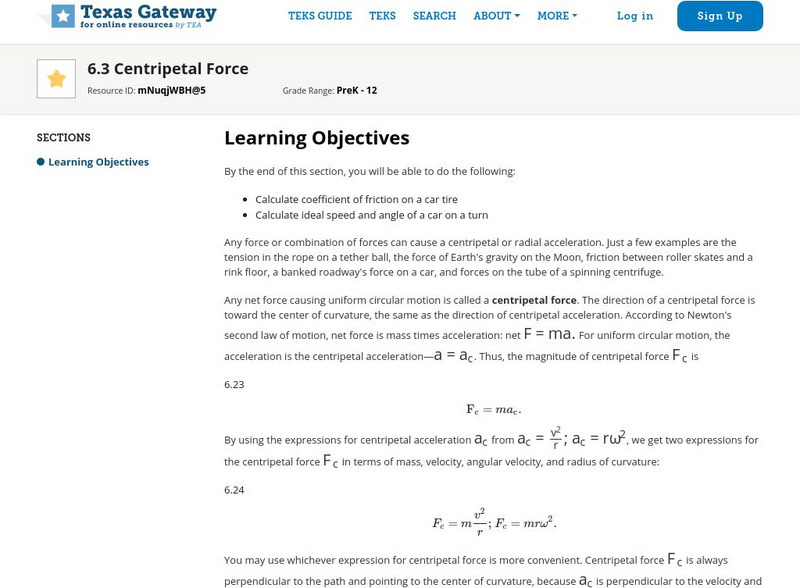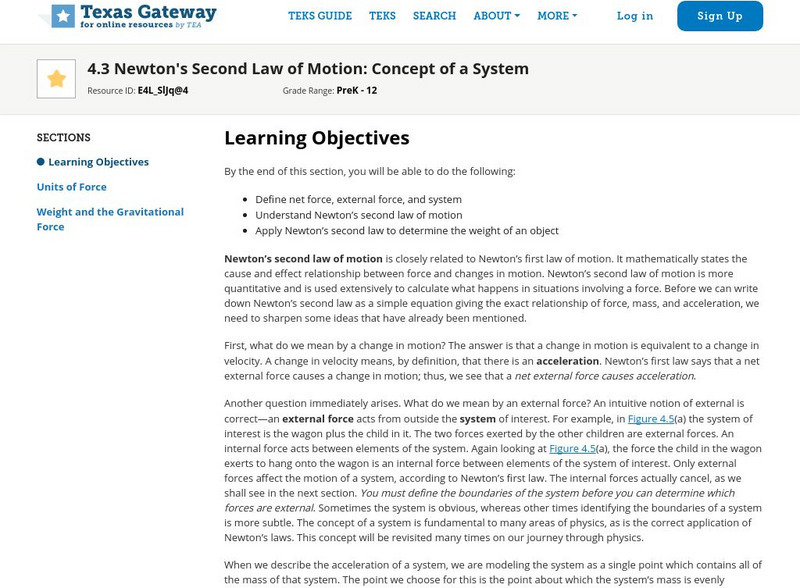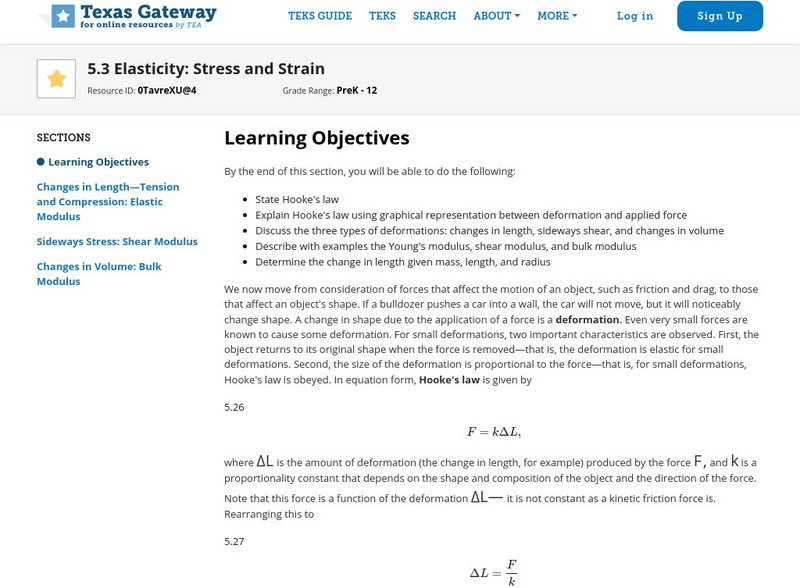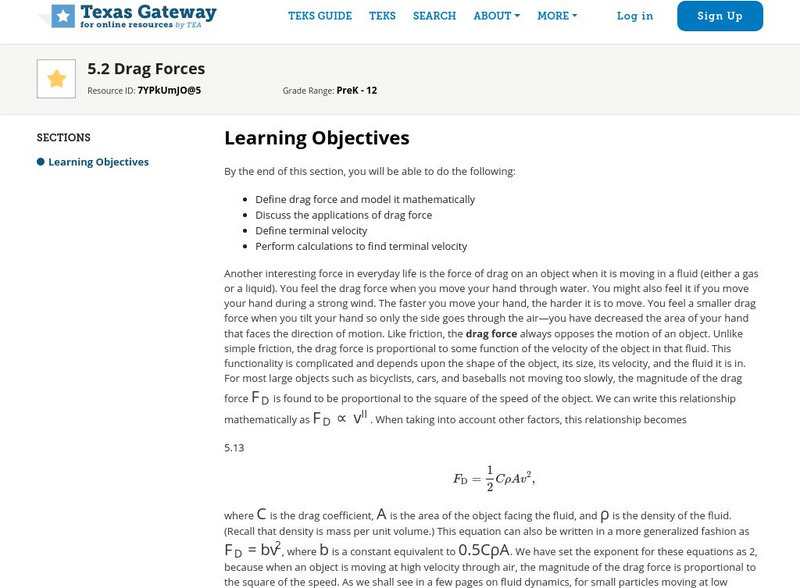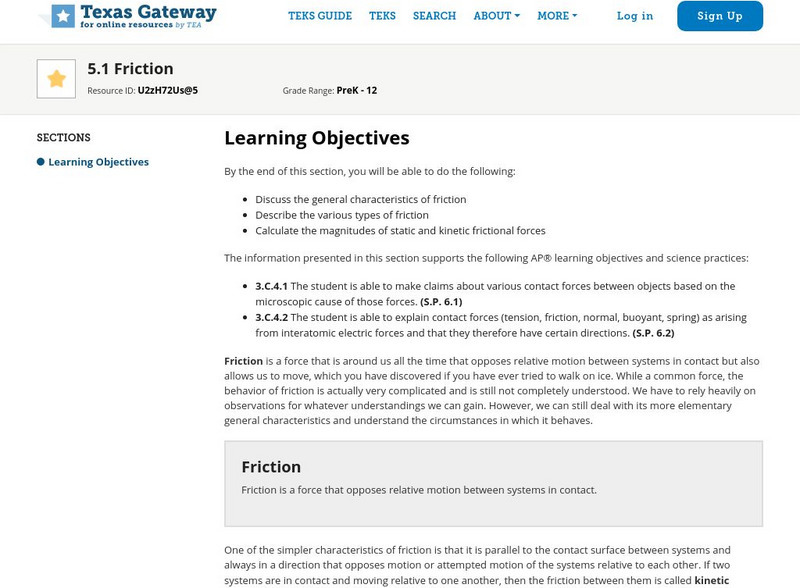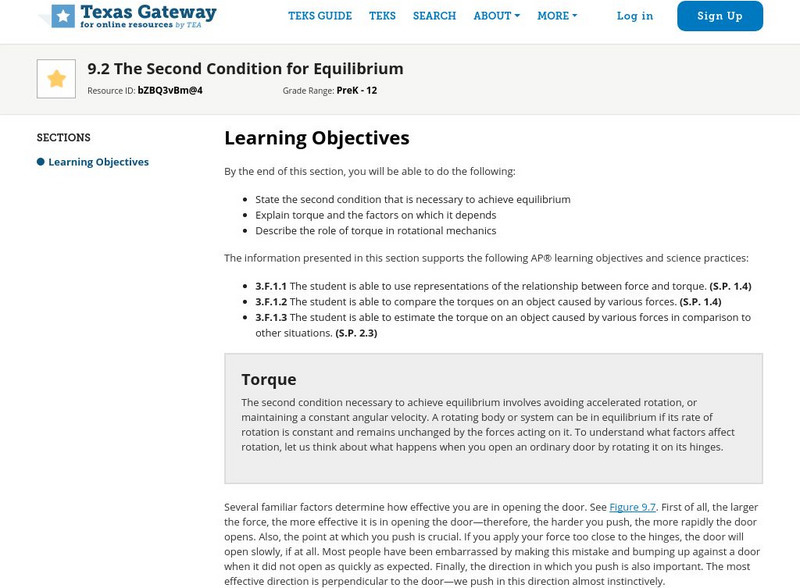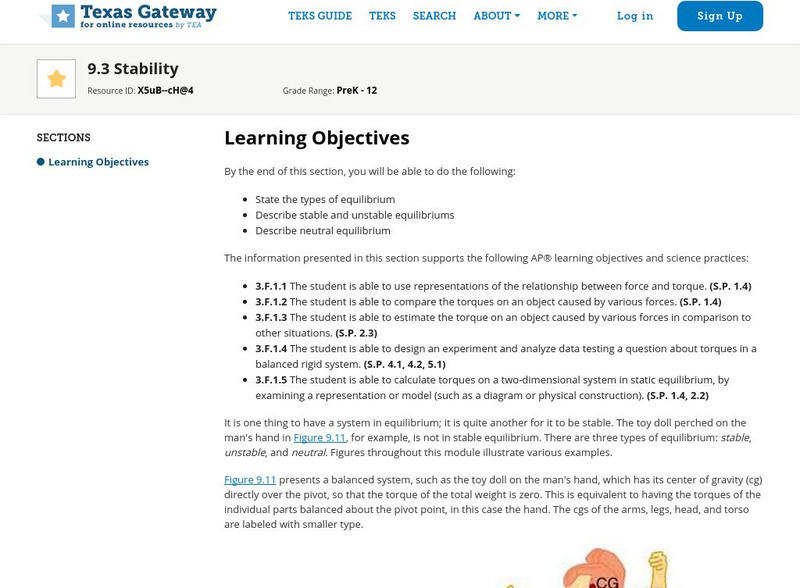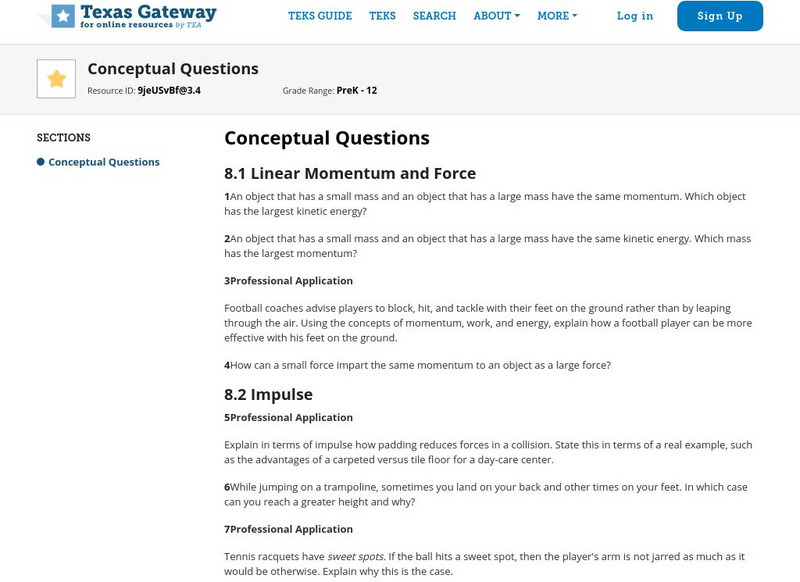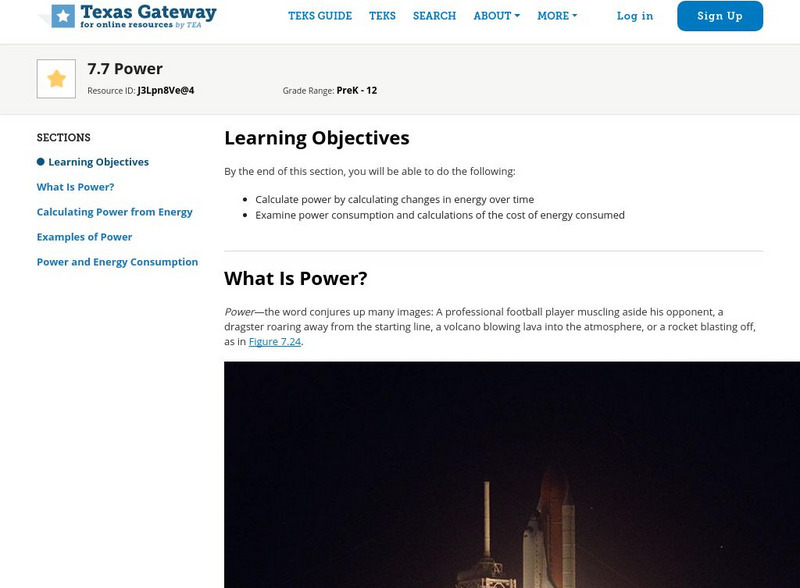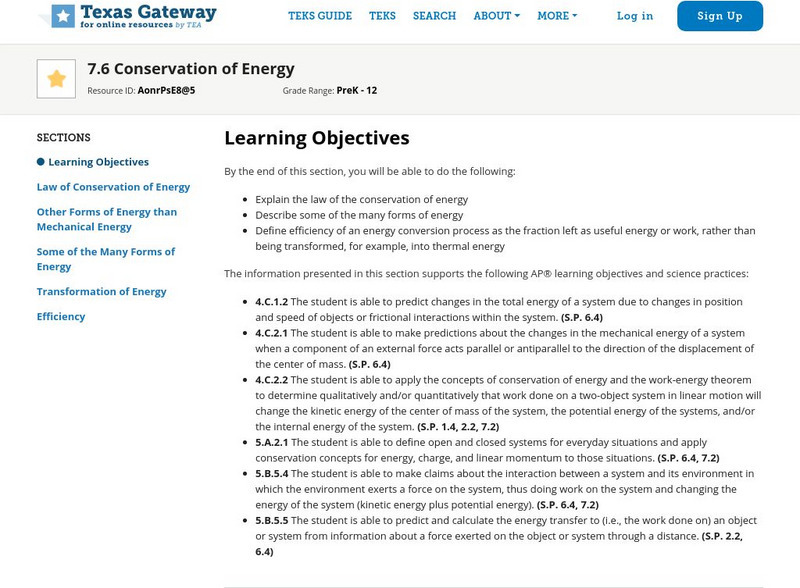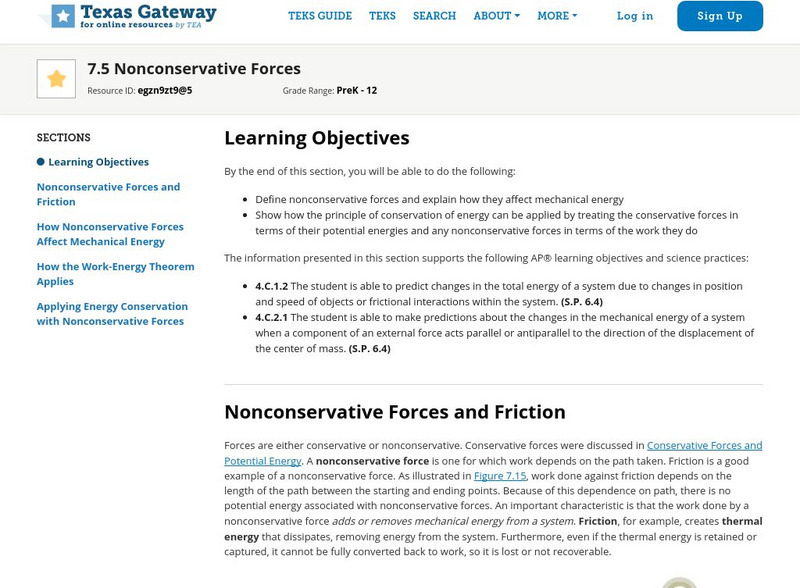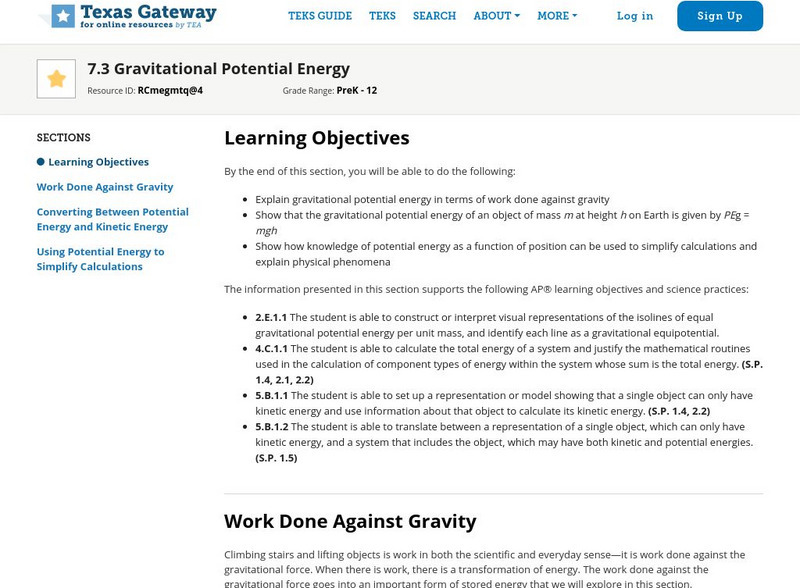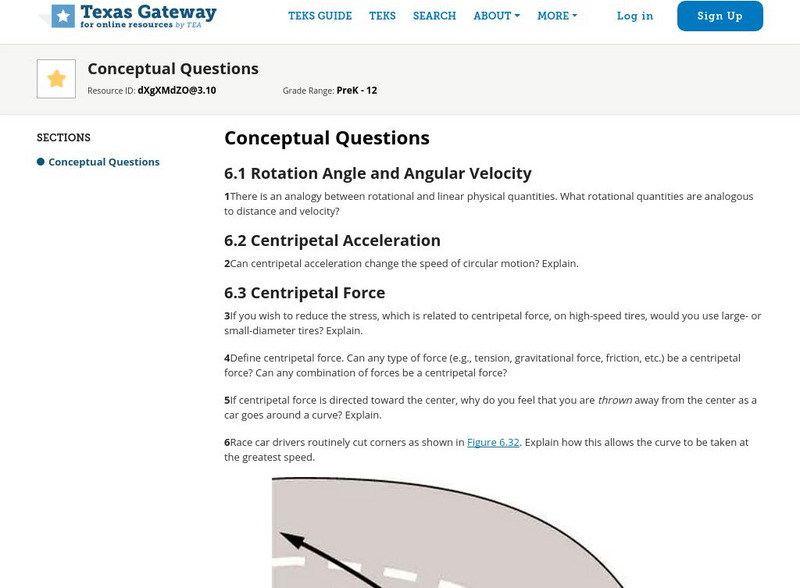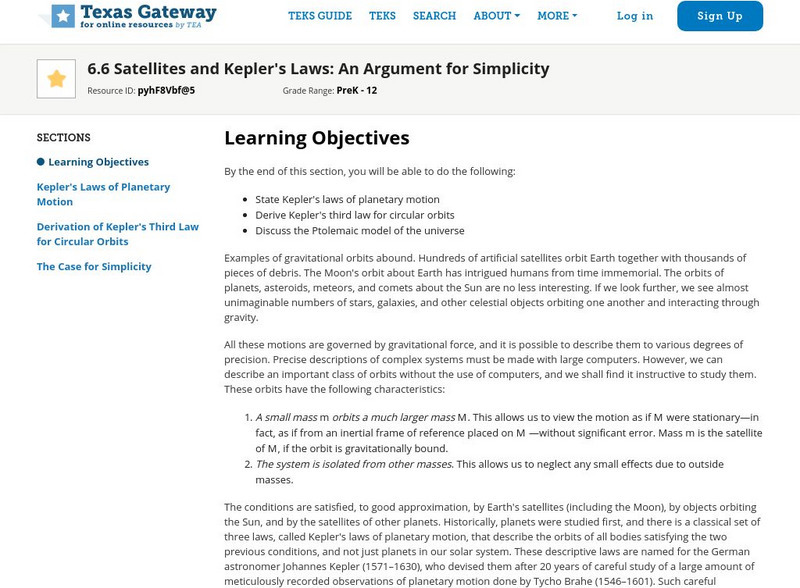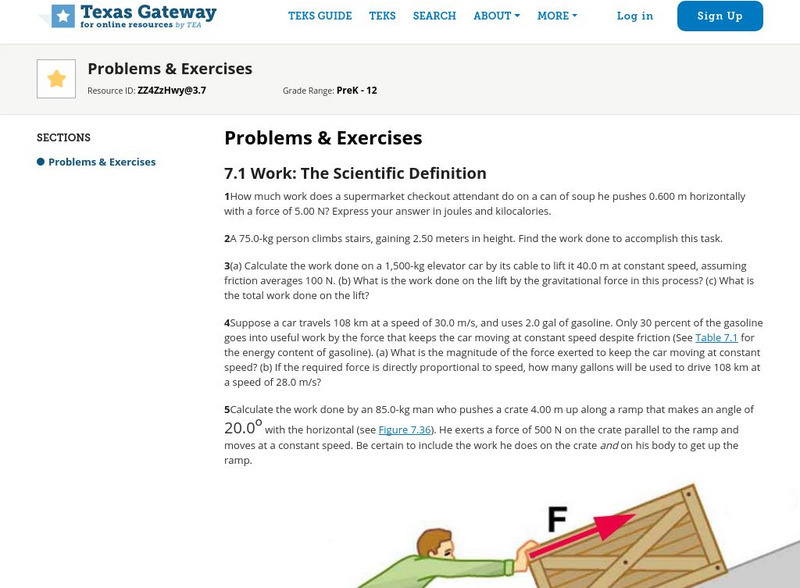Texas Education Agency
Texas Gateway: Uniform Circular Motion and Gravitation: Centripetal Forces
By the end of this section, you will be able to calculate coefficient of friction on a car tire and to calculate ideal speed and angle of a car on a turn.
Texas Education Agency
Texas Gateway: Uniform Circular Motion and Gravitation: Centripetal Acceleration
By the end of this section, you will be able to establish the expression for centripetal acceleration and to explain the centrifuge.
Texas Education Agency
Texas Gateway: Circular Motion & Gravitation: Rotation Angle & Angular Velocity
By the end of this section, you will be able to define arc length, rotation angle, radius of curvature, and angular velocity; and to calculate the angular velocity of a car wheel spin.
Texas Education Agency
Texas Gateway: Friction, Drag, and Elasticity: Problems and Exercises
This is a list of 43 problems/exercises that cover the content of Chapter 5: Further Applications of Newton's Laws: Friction, Drag, and Elasticity from the AP Physics online text.
Texas Education Agency
Texas Gateway: Kinematics in Two Dimensions: Problems & Exercises
This page provides and list of 70 problems and exercises focusing on the content of Chapter 3: Kinematics in Two Dimensions in the AP Physics online text.
Texas Education Agency
Texas Gateway: Force and Newton's Laws: Section Summary
This page summarizes each section of Chapter 4: Dynamics: Force and Newton's Laws of Motion in the AP Physics online text. These include Newton's three laws of motion and application of those and other forces.
Texas Education Agency
Texas Gateway: 4.3 Newton's Second Law of Motion: Concept of a System
By the end of this section, you will be able to define net force, external force, and system; understand Newton's second law of motion; and apply Newton's second law to determine the weight of an object.
Texas Education Agency
Texas Gateway: Force and Newton's Laws: Problems and Exercises
This page offers 57 problems/exercises based on the content of Chapter 4: Dynamics: Force and Newton's Laws from the AP Physics online text.
Texas Education Agency
Texas Gateway: Further Applications of Newton's: Elasticity: Stress and Strain
By the end of this section, you will be able to state Hooke's law; explain Hook's law using graphical representations between deformation and applied force; discuss the three types of deformations: changes in length, sideways shear, and...
Texas Education Agency
Texas Gateway: 5.2 Further Applications of Newton's Laws: Drag Forces
By the end of this section, you will be able to define drag force and model it mathematically, discuss the applications of drag force, define terminal velocity, and perform calculations to find terminal velocity.
Texas Education Agency
Texas Gateway: 5.1 Further Applications of Newton's Laws: Friction
By the end of this section, you will be able to discuss the general characteristics of friction, describe the various types of friction, and calculate the magnitudes of static and kinetic frictional forces.
Texas Education Agency
Texas Gateway: Ap Physics: The Second Condition for Equilibrium
By the end of this section, you will be able to state the second condition that is necessary to achieve equilibrium, explain torque and the factors on which it depends, and describe the role of torque in rotational mechanics.
Texas Education Agency
Texas Gateway: Applications of Statics, Including Problem Solving Strategies
By the end of this section, you will be able to discuss the applications of statics in real life and to state and discuss various problem-solving strategies in statics.
Texas Education Agency
Texas Gateway: Ap Physics: Statics and Torque: Stability
By the end of this section, you will be able to state the types of equilibrium, describe stable and unstable equilibriums, and describe neutral equilibrium.
Texas Education Agency
Texas Gateway: Linear Momentum and Collisions: Conceptual Questions
This page features 22 questions covering the major concepts in Chapter 8: Linear Momentum and Collisions from the AP Physics online text.
Texas Education Agency
Texas Gateway: Ap Physics: Power
By the end of this section, you will be able to calculate power by calculating changes in energy over time and to examine power consumption and calculations of the cost of energy consumed.
Texas Education Agency
Texas Gateway: Ap Physics: Conservation of Energy
By the end of this section, you will be able to explain the law of the conservation of energy; describe some of the many forms of energy; and define efficiency of an energy conversion process as the fraction left as useful energy or...
Texas Education Agency
Texas Gateway: Nonconservative Forces
By the end of this section, you will be able to define nonconservative forces and explain how they affect mechanical energy, and to show how the principle of conservation of energy can be applied by treating the conservative forces in...
Texas Education Agency
Texas Gateway: Ap Physics: Conservative Forces and Potential Energy
By the end of this section, you will be able to define conservative force, potential energy, and mechanical energy; explain the potential energy of a spring in terms of its compression when Hooke's law applies; and use the work-energy...
Texas Education Agency
Texas Gateway: Ap Physics: Gravitational Potential Energy
By the end of this section, you will be able to explain gravitational potential energy in terms of work done against gravity, show that the gravitational potential energy of an object of mass m at height h on Earth is given by PEg = mgh,...
Texas Education Agency
Texas Gateway: Uniform Circular Motion and Gravitation: Problems and Exercises
This page offers a list of 50 problems/exercises to solve based on the content of Chapter 6: Uniform Circular Motion and Gravitation from the AP Physics online text.
Texas Education Agency
Texas Gateway: Ap Physics: Uniform Circular Motion and Gravitation: Questions
This is a list of 23 questions covering the major concepts of Chapter 6: Uniform Circular Motion and Gravitation from the AP Physics online text.
Texas Education Agency
Texas Gateway: Satellites and Kepler's Laws: An Argument for Simplicity
By the end of this section, you will be able to state Kepler's laws of planetary motion, derive Kepler's third law for circular orbits, and discuss the Ptolemaic model of the universe.
Texas Education Agency
Texas Gateway: Work, Energy, and Energy Resources: Problems & Exercises
This is a list of 74 problems/exercises to solve over the content of Chapter 7: Work, Energy, and Energy Resources from the AP Physics online text.


